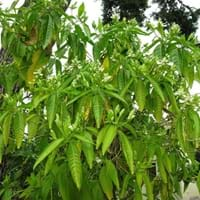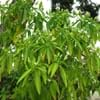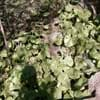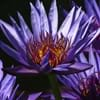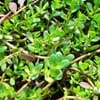Life Span
Perennial
Perennial
Type
Herbs, Perennial
Herbs
Origin
South-Eastern Asia
Europe, Asia
Types
Not Available
Not Available
Habitat
Semi desert, Wet forest
Dry areas, Roadsides, stream banks, Stream side, Waste areas
USDA Hardiness Zone
9-11
3-7
Sunset Zone
Not Available
1a, 1b, 2a, 2b, 3a, 3b, 4, 5, 6, 7, 8, 9, 10, 11, 12, 13, 14, 15, 16, 17, 18, 19, 20, 21, 22, 23, 24
Habit
Clump-Forming
Clump-Forming
Minimum Width
Not Available
Flower Color
White
White, Lavender
Flower Color Modifier
Bicolor
Bicolor
Fruit Color
Not Available
Sandy Brown
Leaf Color in Spring
Dark Green
Gray Green, Gray
Leaf Color in Summer
Green, Light Green
Gray Green, Gray
Leaf Color in Fall
Dark Green
Gray Green, Gray
Leaf Color in Winter
Dark Green
Light Green
Leaf Shape
Elliptic
Arrowhead
Plant Season
Spring, Summer, Fall, Winter
Spring, Summer, Fall
Sunlight
Full Sun, Partial Sun, Partial shade
Full Sun, Partial Sun
Growth Rate
Very Fast
Fast
Type of Soil
Clay, Loam, Sand
Clay, Loam, Sand
The pH of Soil
Acidic, Neutral, Alkaline
Acidic, Neutral, Alkaline
Soil Drainage
Average
Well drained
Bloom Time
Indeterminate
Summer, Late Summer, Early Fall
Tolerances
Wet Site
Drought, Dry soil
Where to Plant?
Container, Ground
Container, Ground
How to Plant?
Stem Cutting
Seedlings
Plant Maintenance
Medium
Low
Watering Requirements
Average Water Needs, Needs good drainage
Do Not over Water, Never Over-water, Requires regular watering, Water when soil is dry
In Summer
Lots of watering
Lots of watering
In Spring
Moderate
Moderate
In Winter
Average Water
Average Water
Soil pH
Acidic, Neutral, Alkaline
Acidic, Neutral, Alkaline
Soil Type
Clay, Loam, Sand
Clay, Loam, Sand
Soil Drainage Capacity
Average
Well drained
Sun Exposure
Full Sun, Partial Sun, Partial shade
Full Sun, Partial Sun
Pruning
Cut away fading foliage, Cut upper 1/3 section when young to enhancegrowth, Remove damaged leaves, Remove dead branches, Remove dead leaves
Prune if you want to improve plant shape, Prune in spring, Remove damaged leaves, Remove dead leaves
Fertilizers
All-Purpose Liquid Fertilizer, Don't use high pH fertilizers
fertilize every 2-3 weeks while growing, fertilize in growing season
Pests and Diseases
Aphids, Downy mildew, Dry root rot, Rust, Spider mites
Caterpillars, Leaf Hoppers, Nematodes, Spider mites
Plant Tolerance
Heat Tolerance, Humidity
Drought, Frost
Flower Petal Number
Single
Single
Fragrant Bark/Stem
No
Yes
Foliage Texture
Medium
Medium
Foliage Sheen
Matte
Matte
Attracts
Aphids, Bees, Butterflies, Snails
Flying insects, Insects, Spider Mites
Allergy
Dizziness, Mouth itching, Vomiting
Avoid during Pregnancy, Headache, Stomach pain, Vomiting
Aesthetic Uses
Cottage Garden, Showy Purposes
Beautification, Landscape Designing, Showy Purposes
Beauty Benefits
Good Cleanser, Good for the Scalp
Not Available
Environmental Uses
Air purification, Insect Repellent
Air purification
Medicinal Uses
Antipyretic, Bronchitis, Cough, Digestive disorders, Ear infections, Expectorant, Laxative, Migraines, Piles, Rheumatism, Throat infection, Treating fever
Arthritis, Cold, constipation, Fever, Insomia, Migraines, Upset stomach
Part of Plant Used
Bark, Leaf Stalks, Leaves
Whole plant
Other Uses
Biomass for fuel, Can be made into a herbal tea, Culinary use, Oil is used for aromatherapy, Used as a laxative
Air freshner, Decoration Purposes, Employed in herbal medicine, Making Perfumes, Making Shampoo, Making Sweet Scented Oil, Medicinal oil, Used as Ornamental plant, Used for its medicinal properties
Used As Indoor Plant
No
Yes
Used As Outdoor Plant
Yes
Yes
Garden Design
Container, Hedges, Mixed Border, Screening / Wind Break, Tropical
Container, Herb / Vegetable, Mixed Border
Botanical Name
Justicia adhatoda
NEPETA cataria
Common Name
Malabar nut, Adulsa, Adhatoda, Vasaka
Cat Nip, Catnip
In Hindi
अडुळसा, अडुसा
कटनीप
In German
Indisches Lungenkraut
Katzenminze
In French
Justicia adhatoda
cataire
In Spanish
Justicia adhatoda
Catnip
In Greek
Justicia adhatoda
Είδος δυόσμου
In Portuguese
Justicia adhatoda
catnip
In Polish
Justicia adhatoda
Kocimiętka
In Latin
Justicia adhatoda
catnip
Phylum
Magnoliophyta
Magnoliophyta
Class
Magnoliopsida
Magnoliopsida
Order
Scrophulariales
Lamiales
Family
Acanthaceae
Lamiaceae
Clade
Angiosperms, Monocots
Angiosperms, Asterids, Eudicots
Tribe
Justicieae
Mentheae
Subfamily
Acanthoideae
Nepetoideae
Season and Care of Malabar nut and Catnip
Season and care of Malabar nut and Catnip is important to know. While considering everything about Malabar nut and Catnip Care, growing season is an essential factor. Malabar nut season is Spring, Summer, Fall and Winter and Catnip season is Spring, Summer, Fall and Winter. The type of soil for Malabar nut is Clay, Loam, Sand and for Catnip is Clay, Loam, Sand while the PH of soil for Malabar nut is Acidic, Neutral, Alkaline and for Catnip is Acidic, Neutral, Alkaline.
Malabar nut and Catnip Physical Information
Malabar nut and Catnip physical information is very important for comparison. Malabar nut height is 460.00 cm and width Not Available whereas Catnip height is 980.00 cm and width 60.00 cm. The color specification of Malabar nut and Catnip are as follows:
Malabar nut flower color: White
Malabar nut leaf color: Dark Green
Catnip flower color: White and Lavender
- Catnip leaf color: Gray Green and Gray
Care of Malabar nut and Catnip
Care of Malabar nut and Catnip include pruning, fertilizers, watering etc. Malabar nut pruning is done Cut away fading foliage, Cut upper 1/3 section when young to enhancegrowth, Remove damaged leaves, Remove dead branches and Remove dead leaves and Catnip pruning is done Prune if you want to improve plant shape, Prune in spring, Remove damaged leaves and Remove dead leaves. In summer Malabar nut needs Lots of watering and in winter, it needs Average Water. Whereas, in summer Catnip needs Lots of watering and in winter, it needs Average Water.
